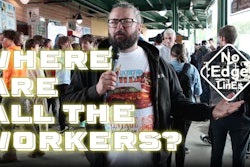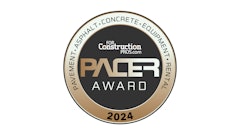
The construction industry is in the midst of a digital transformation. With the rise of remote work, the increasing adoption of digital tools, and a growing emphasis on automation, technology is rapidly changing the way we build. However, not everyone is on board.
The generational technology gap – the disparity in technological proficiency and adoption among workers from different age groups – creates challenges within construction companies. This gap is influenced by factors like varying levels of exposure to technology, differing attitudes towards innovation, and diverse learning styles and preferences. While some workers readily embrace new tools and processes, others may be hesitant or resistant to change. This resistance can occur among workers of all ages, and for construction businesses to remain competitive, it's critical to bridge this divide.
Bring in Fresh Perspectives
Construction has a reputation for being slow to adopt new technologies. This can be attributed, in part, to a workforce that may be comfortable with established practices. However, infusing the industry with fresh perspectives can spark a wave of innovation.
One way to bring in fresh perspectives is to grow the workforce. This strategy is especially crucial as the industry faces a skilled labor shortage. Family-owned businesses often grow their workforce by bringing in the next generation of workers, but appealing to early-career professionals is a strategy that can benefit all construction firms. Expanding the talent pool by recruiting workers from other fields can also bring diverse skill sets and foster a culture of inclusivity and innovation.
 Construction businesses have a unique opportunity to shape the future by instilling a culture of innovation and creating a legacy that extends beyond the bottom line.@Seventyfour - adobe.stock.com
Construction businesses have a unique opportunity to shape the future by instilling a culture of innovation and creating a legacy that extends beyond the bottom line.@Seventyfour - adobe.stock.com
Introducing fresh talent can help spark innovation in traditional business practices. Early-career workers and those with tech-focused backgrounds are often adept at leveraging cutting-edge technologies like Building Information Modeling (BIM), drones, and augmented reality. These tools can streamline construction processes, enhance safety, and optimize project outcomes. Additionally, new entrants to the industry, particularly those with backgrounds in sustainability, can offer valuable insights for incorporating green building practices and minimizing the environmental impact of construction projects. This is especially important as greener building practices become more widespread in the industry.
Find Common Ground to Foster Collaboration
A multi-generational workforce offers a wealth of experience and viewpoints. However, simply bringing different age groups together isn't enough. To ensure success, proactive steps must be taken to foster collaboration across all generations.
Change can be challenging, and it's important to acknowledge that some workers may be resistant to new technologies or processes. Building a supportive, forward-thinking culture creates an environment where teams are open to new ideas and willing to adapt. This won’t happen overnight, but employers can begin by creating an environment where open communication is encouraged, and everyone feels comfortable asking questions and offering suggestions.
Encouraging mutual respect among workers of all generations is key. Each generation brings unique skills, experiences, and perspectives to the table. Recognizing and valuing these contributions fosters a culture where team members support each other’s growth and development.
Facilitating knowledge sharing and mentorship programs is a great way to bring teams together. These programs allow experienced workers to pass down their expertise to colleagues while providing opportunities for early-career workers to share their insights and knowledge. This helps bridge the gap between generations, promoting collaboration and skill development across the board.
Build a Legacy for the Future
Construction businesses have a unique opportunity to shape the future by instilling a culture of innovation and creating a legacy that extends beyond the bottom line.
 Embracing a culture of continuous learning and improvement can empower employees to experiment with new tools and processes.@COSPV - adobe.stock.com
Embracing a culture of continuous learning and improvement can empower employees to experiment with new tools and processes.@COSPV - adobe.stock.com
This begins by having a clear vision for the business that includes core values and company culture. Does the business strive to be a leader in sustainable construction practices? A cutting-edge innovator in construction technology? Defining this vision will guide the decision-making process and attract talent who share the business’ values.
Prioritizing people is equally important. At the heart of any successful construction company are the people. By nurturing strong relationships with employees, clients, and other stakeholders, businesses can develop top talent, increase client satisfaction, and consistently deliver high-quality projects. Investing in people today builds a foundation for future success.
Embracing a culture of continuous learning and improvement can empower employees to experiment with new tools and processes. This fosters an environment where innovation thrives and the generational tech gap narrows.
Bridging the generational tech gap requires a multi-pronged approach. Bringing in fresh perspectives, fostering collaboration across generations, and building a legacy focused on innovation and people, helps construction companies build a thriving workforce that's well-equipped to navigate the ever-evolving business landscape. This will ultimately lead to a more efficient, sustainable, and successful future for the industry.


















